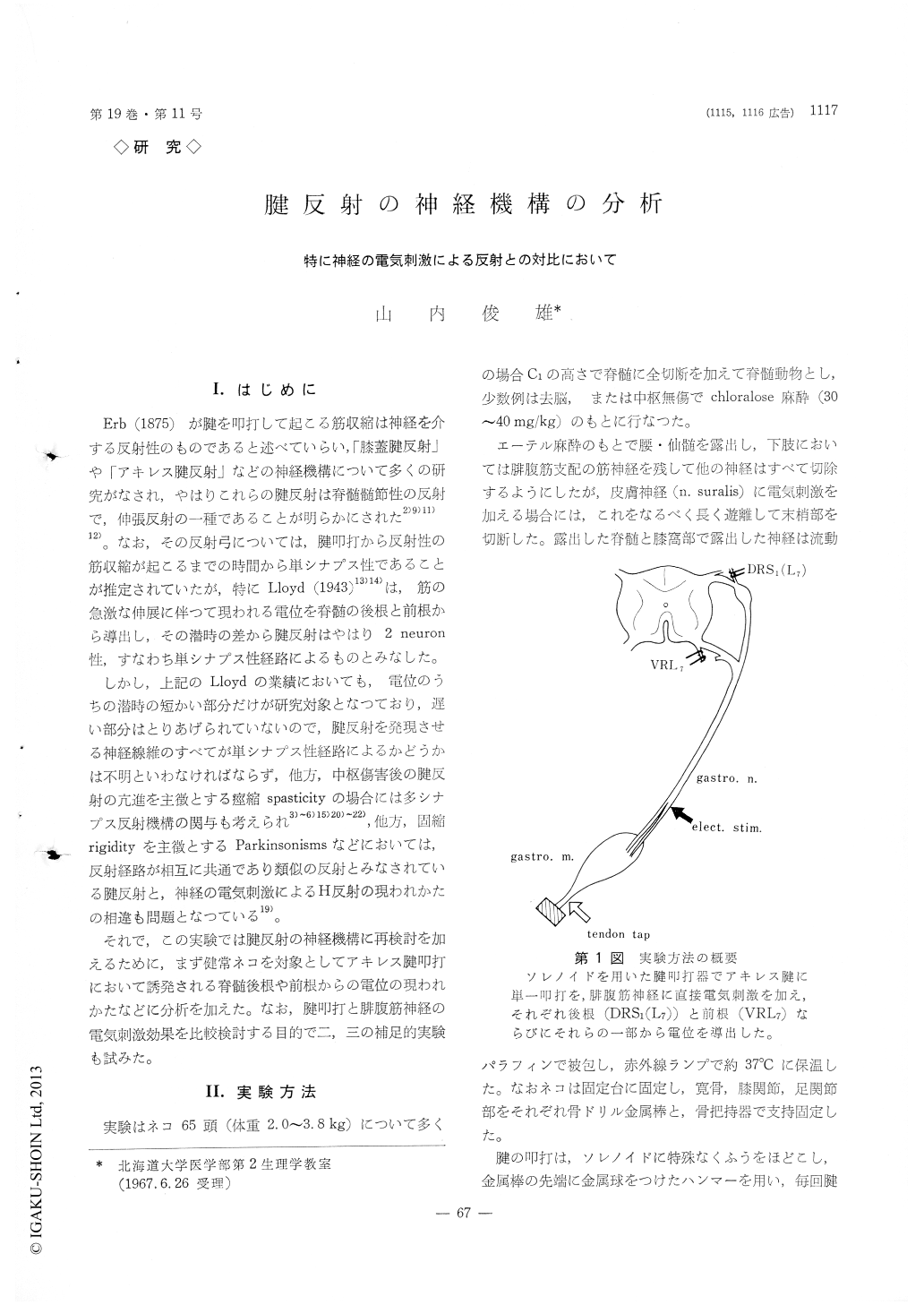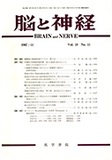Japanese
English
- 有料閲覧
- Abstract 文献概要
- 1ページ目 Look Inside
I.はじめに
Erb (1875)が腱を叩打して起こる筋収縮は神経を介する反射性のものであると述べていらい,「膝蓋腱反射」や「アキレス腱反射」などの神経機構について多くの研究がなされ,やはりこれらの腱反射は脊髄髄節性の反射で,伸張反射の一種であることが明らかにされた2)9)11)12)。なお,その反射弓については,腱叩打から反射性の筋収縮が起こるまでの時間から単シナプス性であることが推定されていたが,特にLloyd (1943)13)14)は,筋の急激な伸展に伴って現われる電位を脊髄の後根と前根から導出し,その潜時の差から腱反射はやはり2 neuron性,すなわち単シナプス性経路によるものとみなした。
しかし,上記のLloydの業績においても,電位のうちの潜時の短かい部分だけが研究対象となつており,遅い部分はとりあげられていないので,腱反射を発現させる神経線維のすべてが単シナプス性経路によるかどうかは不明といわなければならず,他方,中枢傷害後の腱反射の亢進を主徴とする痙縮spasticityの場合には多シナプス反射機構の関与も考えられ3)〜6)15)20)〜22),他方,固縮rigidityを主徴とするParkinsonismsなどにおいては,反射経路が相互に共通であり類似の反射とみなされている腱反射と,神経の電気刺激によるH反射の現われかたの相違も問題となつている19)。
Neural mechanisms of the Achilles tendon jerk were analyzed in 65 normal adult cats.
Reflex responses in the ventral root and afferent volleys in the dorsal root following an Achilles ten-don tap, or a single electrical stimulation of the gastrocnemius nerve were picked up and compared with each other.
1) Following the tendon tap, afferent volleys of dis-tinctly longer duration (7~12 msec, about 0.5 mV) than those of the electrical stimulation (1~2 msec, about 2.0mV) were observed in the dorsal root. It was found that 90.7% of unit afferent discharges composing the afferent volleys belong to those of group Ia fibers from muscle spindles and that they are widely distributed (asynchronous) in the afferent volleys.
2) Reflex responses in the ventral root following the tendon tap were of more complex patterns than those by the electrical stimulation, showing an early response of relatively short duration (1~3 msec, 0.2~0.7 mV) followed by late, irregular ones with long duration (5~10 msec, 0.2~0.5mV).
Resultant from analysis of these responses, all the unit discharges in the early response examined were supposed to be monosynaptic reflex ones, whereas unit discharges of 55.0% those in the late responses were monosynaptic ones and the remainly 45.0% belonged to polysynaptic ones.
3) As to the effect of various kinos of stimulations upon the reflex responses in the ventral root re-spectively following the tendon tap and the electrical stimulation, the former was more susceptible than the later.
4) Difference between the latency of the afferent volley in the dorsal root and that of the reflex re-sponse in the ventral root (the spinal delay) follow-ing tendon tap was approximately 2 msec longer than that of electrical stimulation.

Copyright © 1967, Igaku-Shoin Ltd. All rights reserved.


